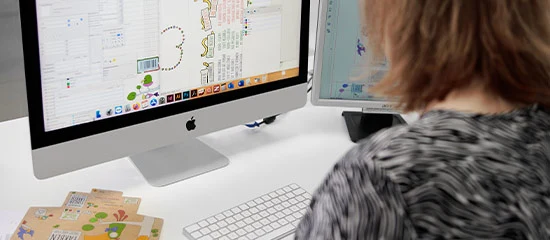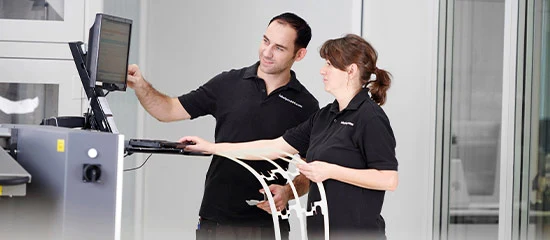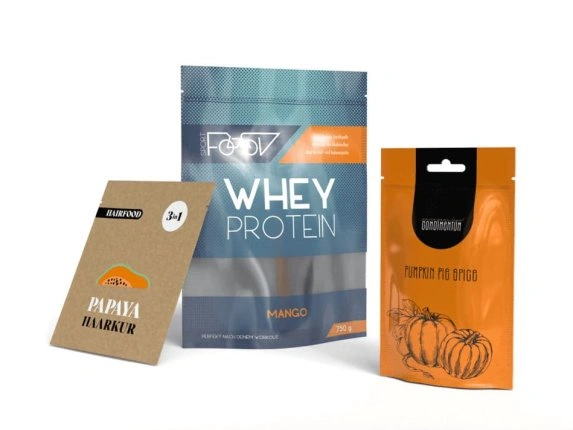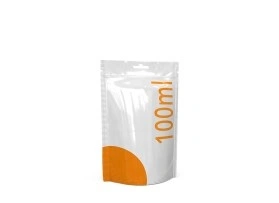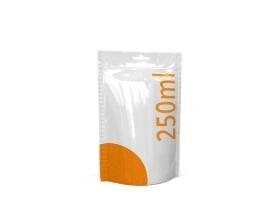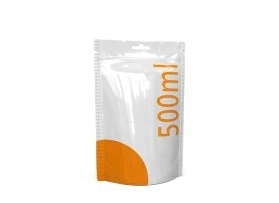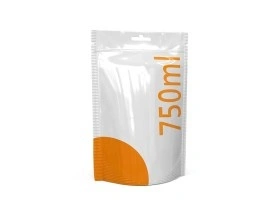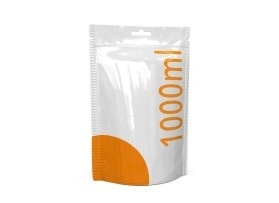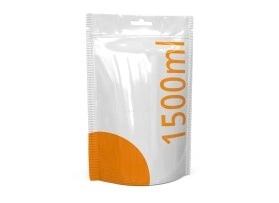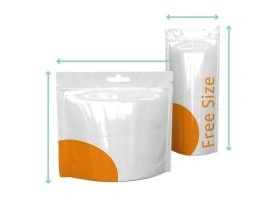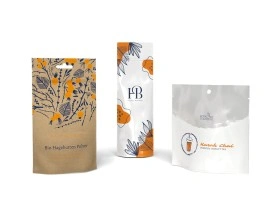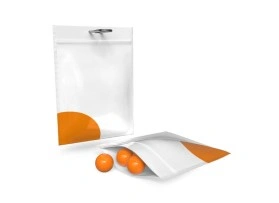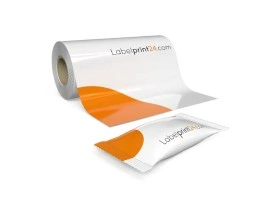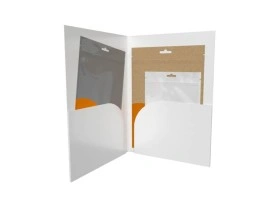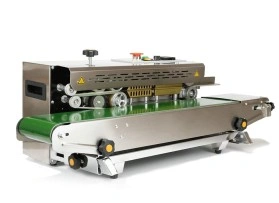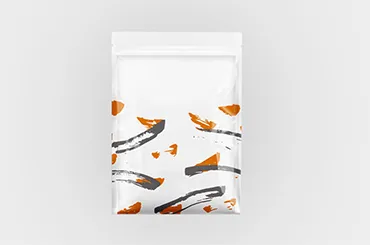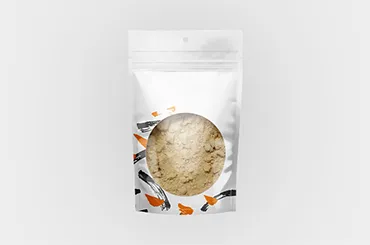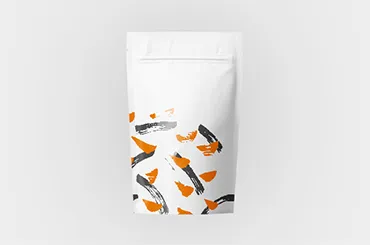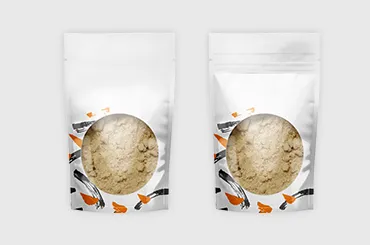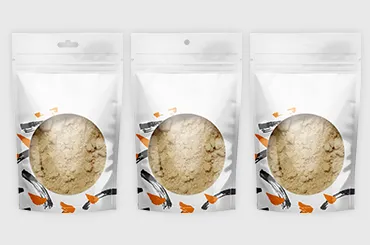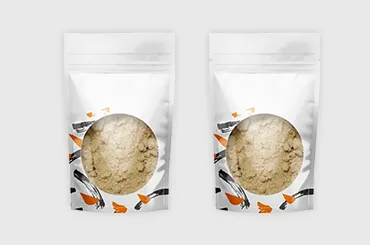Stand up pouches
Discover our versatile stand up pouches, designed to be flexible, handy and material-saving - these custom stand up pouches ensure lasting freshness for your products while offering ample options for personalisation. Available in versatile options, at Labelprint24 you can choose between stand up pouches (Doypacks) or flat pouches to suit your packaging needs. While, of course we offer custom pouch options, including printed stand up pouches tailored to your specifications.
- Available as Stand-up Pouch / Doypack or Flat Pouch
- Food-safe, odourless and tasteless
- High-quality feel and large information surface
Discover our wide range of high-quality customisable packaging!
- Production TimeFrom 10 days
- MaterialWhite film / Metallic film / Transparent film / Kraft paper
- SurfaceMatte / Gloss / Soft Touch
- AestheticsWindow / Zipper / Tear tab / Euro hole
Select kind of product
STAND UP POUCHES ARE IN VOGUE: THE MOST IMPORTANT THINGS TO KNOW ABOUT POUCH PACKAGING

- Elevate your presentation with pouch packaging. Custom stand up pouches are gaining traction as an effective solution for showcasing products at the point of sale.
- Their versatile shapes and materials make them suitable for a wide variety of products, but it’s important to navigate potential pitfalls when selecting the right option.
- Now pack your products with stand up pouch packaging from the Labelprint24 range!
Pouch packaging is a great way to pack a wide variety of products in a convenient and material-saving way. Not every type of product is optimally stored in a folding or cardboard box – this is why we are expanding our product range to include pouch packaging.
With pouch packaging, you benefit from versatility, protecting your products while providing ample surface area for an eye-catching design with custom printing. Whether you prefer clear stand up pouches or any other custom pouch, our options can be tailored to your specifications.
This article addresses any questions you may have about stand up pouches packaging- for additional inquiries or personalized advice we are always happy to advise you directly.
The shift towards stand up pouches packaging in the consumer market
The consumer market is in a constant state of change. In recent years, the trend has clearly been moving towards a mobile, fast-paced lifestyle and, in addition, toward high-quality, healthier, fresh and more luxurious products.
This changes the type of goods offered, but also their presentation, and thus their packaging. As a result, there is a rising demand for portion-specific, flexible, and visually appealing packaging—leading to a significant growth in the use of stand up pouches.
Over the past five years, the market share for stand up pouches packaging has expanded dramatically. Many products that were traditionally packaged in cans or jars with lids are now more frequently available in stand up pouches. Notably, a study by the Canadian Institute in 2018 projected that this category could command a global market share of 53.1 percent in the food sector alone.
With the increasing popularity of stand up pouches, brands can enhance their appeal and align with consumer preferences. It’s clear that the future of packaging lies in the versatility and convenience of printed stand up pouches. Discover our flexible packaging options, designed to be handy and material-saving.
The versatility and benefits of stand up pouches packaging
Stand up pouches are increasingly used for a diverse range of fillings, including:
- Food
- Cosmetic products
- Animal feed
- Beverages
- Granulated or powdered products such as dietary supplements
The versatility of stand up pouches packaging in various industries
Stand up pouches packaging is extremely versatile and therefore incredibly popular in various industries. This versatility translates into a vast array of materials, shapes, designs, and processing methods available on the market.
To select the optimal flexible packagin film structure design for your products, it's essential to carefully consider all available options and factors. Below, we provide an overview of the most important aspects offered by the market.
If you have questions about the wide range of choices available, please don't hesitate to contact us—our experts are here to assist you!
1. Choosing the right materials for stand up pouches UK
The materials used to create stand up pouches significantly influence their properties, making this an essential decision when selecting the right packaging for your products. Depending on the type of filling intended, pouch packaging must meet specific requirements. There are two main categories of materials utilized in pouch production: monomaterials and composite materials.
Monomaterials: These generally offer a cost-effective solution and are recyclable. For example, pure polyethylene can be easily integrated into recycling systems. Here are some key monomaterials used in pouch manufacturing:
- Polypropylene (PP): a very widespread plastic that, when properly processed with an EVOH barrier layer (ethylene-vinyl alcohol copolymer), can be used without any other substances, and is therefore 100 percent recyclable.
- Polyethylene (PE): more precisely, LDPE (low-density polyethylene) is often used. This locks in aromas and flavours – cling film, for example, is made of the same material.
- Polyethylene terephthalate (PET): thanks to its long name, it is almost exclusively known as PET.
Composite Materials: While these are often less recyclable, they are favored for many applications due to their superior properties. Combining two or more materials allows for numerous design possibilities while maintaining high levels of protection for the contents. Popular composite combinations for packaging stand up pouches include:
- Plastic and paper: Paper and PE, or paper and PP, are often combined in order to blend the high stability and good feel of paper with the tear resistance and barrier properties of plastic. Paper and PP are often used as Kraft paper for dry foods such as nuts or tea.
- Polypropylene and metal foil: Also known as MET-PET, this is a plastic foil that is metallised with a thin aluminium layer - this results in excellent protection for your product. MET-PET pouches not only have the highest barrier performance for gases and moisture; they also effectively protect the products from the effects of light.
- Kaft paper, PET and PE: a particularly strong, three-layer composite material that is often used for stable stand-up pouches. You have the option, for example, of creating pouches that look like paper but offer better protection and have a plastic viewing window.
Selecting the right materials for packaging stand up pouches is crucial to ensure product integrity and appeal. If you have further questions about the options available, please reach out to our experts for guidance!
2. Choosing the right shape for your custom pouch
Selecting the right material for your stand up pouches packaging is only half of the equation; the shape of the pouch must also be tailored to suit the product effectively. It's not just about size, but how the pouch is constructed.
Pouch packaging is available in various designs, including options with or without a constructed bottom. Simple flat pouches adapt seamlessly to the shape of their contents, but there are differences to consider. For example, pouches can come with or without side gussets, which allow for increased volume. Additionally, the position of the seam can impact functionality.
Various types of pouches possess specially developed bottoms, which enhance their handling properties. Here are some key pouch types to consider:
- Flat-bottom pouches (box pouches)
- Cross-bottom pouches
- Stand-up pouches (Doypacks)
- Block-bottom pouches
- Bottom-gusset pouches
- Side-gusset pouches
- Quad bags
- Pouch boosters
When selecting the appropriate pouch shape for your printed stand up pouches, consider the specific needs of your products to ensure optimal presentation and functionality. If you have any questions or need further assistance, feel free to reach out to our experts!
3. Enhance your stand up pouches packaging with custom features
Each custom pouch can be equipped with additional features that enhance functionality and tailor the packaging to specific products and marketing strategies. Depending on the type of product, certain customizations can significantly improve usability and appeal.
Here are common features available in the pouch packaging market:
- Press-to-Close Seal: Commonly known as a zipper, this user-friendly feature helps maintain the freshness of the contents and allows for resealing, resealable plastic pouches can be very practical for everyday use. Various options are available, including zippers with double or triple profiles for enhanced barrier performance, or child-resistant closures for added safety. Very fine powdered goods may require specialized closures, including velcro zippers.
- Viewing window: This design element allows for both attractive printing and visibility of the product inside the pouch. By leaving a section of the material unprinted, customers can see the contents directly, which can an appealing alternative to clear stand up pouches.
- Punched hole: For products intended to be displayed on a display stand at the point of sale, a punched hole is necessary for hanging. This is particularly easy to implement with pouch shapes like Doypacks, using common Euro holes or standard round holes.
- Valve: Increasingly popular for high-quality coffee packaging, a valve allows gases to escape without permitting air into the pouch. This feature helps to protect flavors and aromas, ensuring product integrity.
- Tear tab: A convenient option for everyday products often opened on the go, a tear tab enables quick access without scissors. When combined with a press-to-close seal, a tear tab on your resealable plastic pouch can maximise practicality.
- Straw: Plastic pouches are used for some drinks – the iconic Capri Sun bags are a popular example. A special opening is needed here for the straw.
- Spout: For liquids or smoothies, specially designed spouts are usually required to make the pouches suitable for everyday use. Pourers like these are particularly important for pharmaceutical or hygiene products as well as to-go beverages.
With these optional features, stand up pouches packaging provide great versatility. Ranging from flexible packaging, to clear stand up pouches, to resealable plastic pouches - the growing popularity of these pouches across various industries reflects the overall positive sentiment among users who recognize their benefits.
4. Finalizing functional design: The importance of external presentation in pouch packaging
Customizing your packaging with additional features
Printing technologies for pouch packaging
Various printing technologies can be utilized to achieve high-quality results, each with its own processing methods and cost implications:
- Gravure printing: The gravure printing process requires a printing form to be fabricated on steel cylinders, which entails rather high costs per order. This technology is therefore mainly used for very large industrial runs.
- Flexographic printing: This type of printing uses an individually manufactured, flexible rubber printing plate, the so-called cliché. Larger runs should therefore also be selected here. Flexographic printing is very widespread, especially for plastic packaging.
- Offset printing: This printing process is extremely widespread in many applications, including packaging printing. A printing plate is used here. Suitable for medium to large runs.
- Digital printing: Digital printing is the modern counterpart to the variants already mentioned. Instead of using rollers or printing plates, here, the colour is applied to the print substrate using an electrophotographic process. There is no need to manufacture a printing plate or similar production equipment, which is why digital printing is worthwhile even for very small print runs and delivers high-quality results.
At Labelprint24, we exclusively use digital printing, and have many years of experience with the process under our belt. The advantages of digital printing include not being limited by print run size, faster implementation due to fewer preparatory steps, and high-quality output. Our live calculator on product pages allows you to determine the most cost-effective printing technology for your needs. In today's fast-paced, digitalized world, short production times and the ability to manage small promotional runs provide significant benefits, especially with the increasing importance of individual branding.
At Labelprint24, we combine our expertise in packaging technology with advanced digital printing techniques, offering various types of stand up pouches custom printed with your unique design. With our extensive experience, we also address special challenges, such as mass customization, delivering attractive and effective solutions.
Brand new: pouch packaging from Labelprint24
Choosing the right materials for your packaging
To offer suitable packaging solutions for a variety of products, we have selected three different materials for packaging stand up pouches. Each material provides excellent barrier properties, making them suitable for all types of contents. We also utilize our established digital printing technology, ensuring the fastest possible production times without compromising on quality.
To guarantee food safety and consumer health, our pouches are designed to keep printing inks isolated. An additional layer of film covers the inks, which are sealed between two layers of material, preventing contact with the pouch contents or external influences.
Two monomaterials are used:
- White Polypropylene (PP): These plastic pouches have proven their versatility in the market. The white base color provides optimal print quality, making it ideal for eye-catching designs.
- Transparent Polypropylene (PP): The transparent material gives your stand up pouches clear features like viewing windows or larger transparent areas, giving consumers a glimpse of the product inside. The silicon oxide (SiOx) coating significantly enhances the barrier performance, drastically reducing permeability to oxygen and water vapor. This makes our clear stand up pouches suitable for sensitive items, including perishable or aromatic foods like tea and coffee.
Leveraging our extensive experience with this material, we've consistently found polypropylene superior to polyethylene in many applications, providing a wider variety of uses. However, it may not be recommended for certain products in the chemical and pharmaceutical sectors, as well as occasionally in cosmetics - we are always happy to offer personalized advice on material selection based on your specific needs.
Composite Material Option:
- Polypropylene/Aluminium: This metallized film excels in barrier performance and boasts a stable feel. The metallic finish creates special visual effects depending on the printing, offering a luxurious appearance. Its mirror effect renders the material relatively opaque, providing additional protection for sensitive goods. These composite pouches are ideal for high-end products in the food industry as well as other premium goods.
The combination of these two materials ensures maximum stability, a high-quality aesthetic, and optimal conditions for effectively presenting your products to consumers.
Types of bottom in the Labelprint24 range
For the product launch, we have selected three different bottom variants from the diverse shapes of pouch packaging available, covering a wide range of packaging options suitable for almost any purpose. The following stand up pouches are available from Labelprint24:
Custom stand up pouches, particularly Doypacks, are increasingly embraced across numerous product categories due to their versatility and ability to ensure optimal product presentation at the point of sale.
Our additional options
At Labelprint24, we offer the option to enhance your printed stand up pouches with additional features that can be selected during the order configuration process. You can choose from the following options:
Additionally, we are happy to accommodate any other features available on the market - based on special requests. This includes implementing freshness valves for coffee or specialized press-to-close seals, which can be combined with punched holes, additional tabs, or various other options.
If you have any questions or need personal assistance regarding the customization of your stand up pouch packaging, please feel free to reach out to us!
High-quality & cost-effective custom solutions for small production runs
As specialists in digital printing, we offer high-quality solutions for custom small series of pouch packaging. Our advanced printing technology and efficient processes are particularly well-suited for mass customization.
For our customer MyMuesli, we implemented high-quality and highly customised small series, with convincing results. This example illustrates the available possibilities as well as the special process. We would be delighted to implement similar solutions for your project!
Would you like your stand up pouches custom printed, or do you prefer stand up pouches clear? Please share the details of your request, and let us help bring your vision to life with our packaging solutions!
Take a look at our pouch packaging now and see the quality for yourself
Just as our customers are accustomed to, we also offer pouch packaging with the shortest delivery times and starting from the smallest of print runs – directly calculable in our online order form. For special requests involving very high print runs, we are able to resort to a hand-selected network of partners, so that we can also use other printing methods if necessary.
Our key strengths:
If you're interested in our new stand up pouches UK, feel free to use our online calculation tool or contact us directly for more information!

